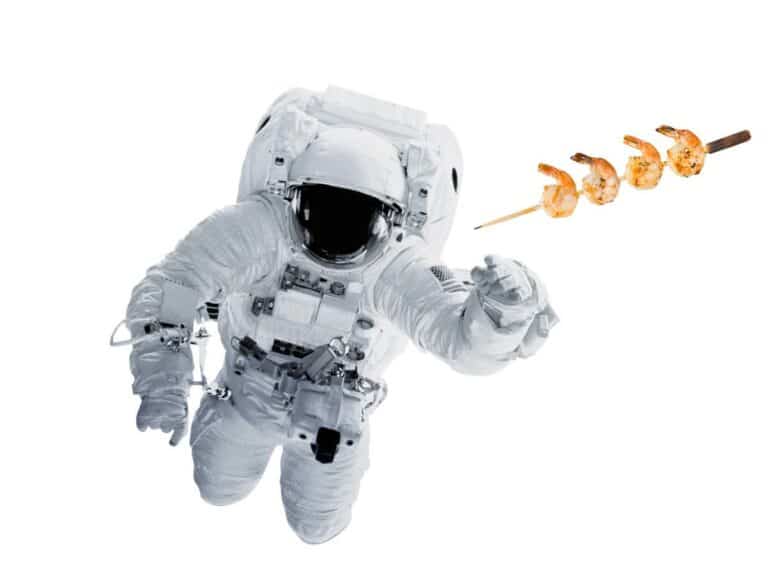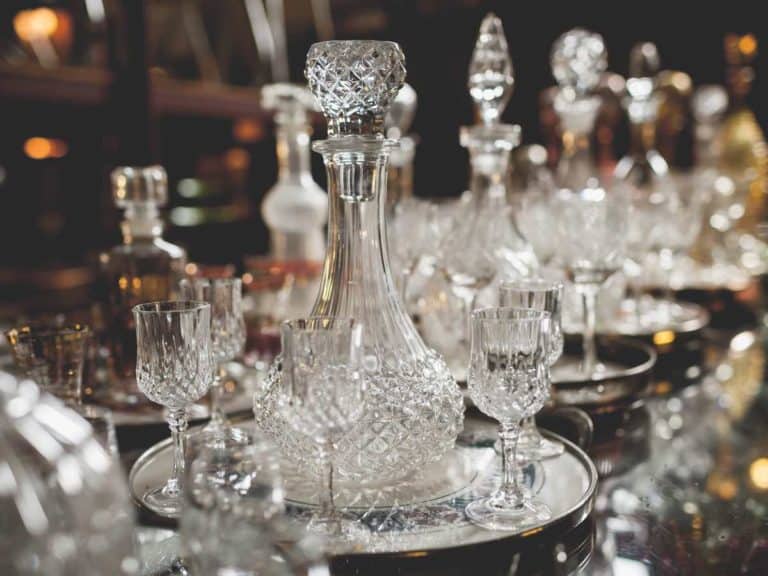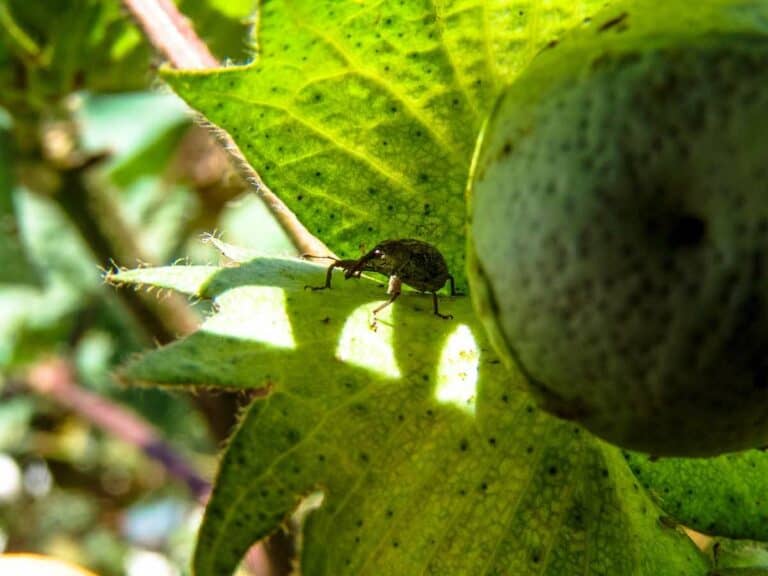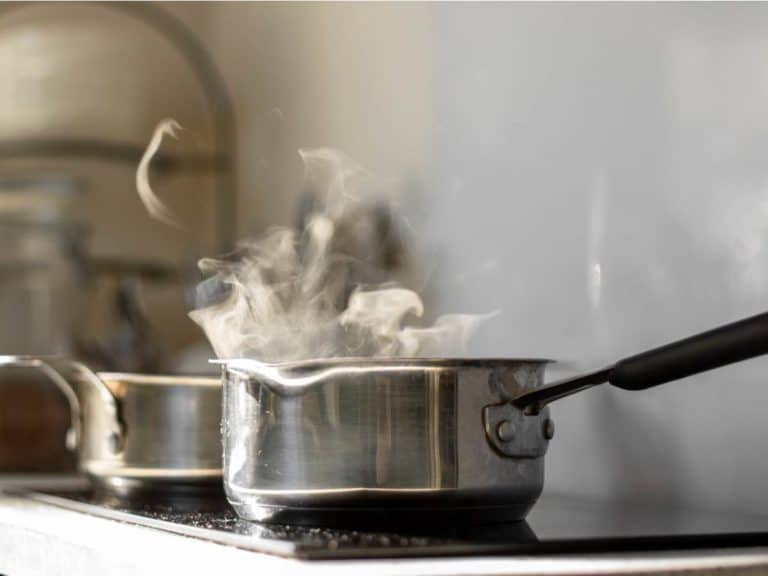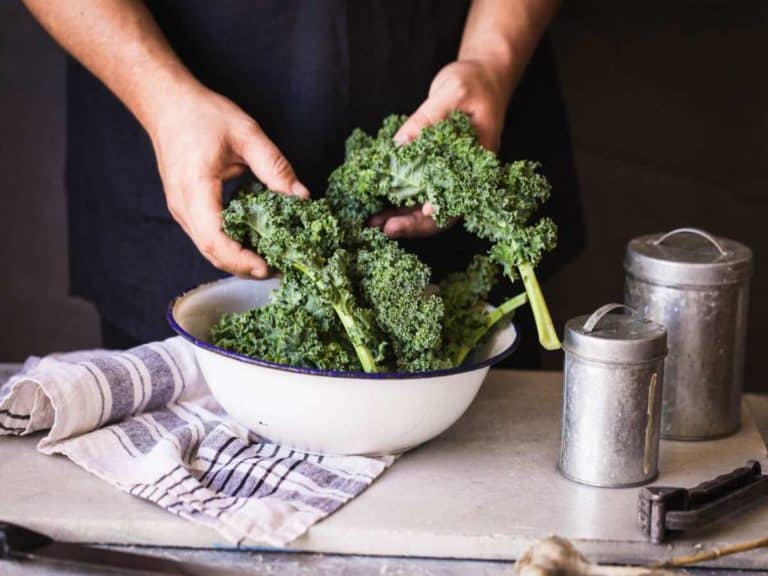Boiling Liquids Other Than Water in an Electric Kettle
According to Consumer Reports, it takes an average of 4.5 minutes to boil water in an electric kettle. And because water is not the only thing we need to boil from time to time, many can’t help but wonder what other liquids they can boil quickly and conveniently in their trusted electric kettles.
It’s true that an electric kettle is one of the best small appliances that you can add to your kitchen or college dorm. But just because it’s very good at boiling water doesn’t mean that it can boil all other liquids, too.
Water and just about anything that’s mostly water can be boiled in an electric kettle. While the appliance is primarily for boiling water, it’s also probably safe to boil thin and runny liquids in it. Still, it’s a must to keep an eye on an electric kettle when using it for boiling other than water.
Here are some of the things you can put in an electric kettle:
- Water
- Broth
- Black coffee
- True teas
- Herbal teas
- Fruit teas
- Diluted juices
Thick and viscous liquids should not be boiled in an electric kettle. That’s because they risk damaging the heating element in some models of the appliance.
More importantly, putting them in an electric kettle is a risk for an injury or, if the contents boil over or the appliance overheats, a fire.
The following are some of the things you should avoid putting in an electric kettle:
- Oil
- Spreadable cheese
- Baby food
- Custard
- Gravy
- Jam
- Marmalade
- Mayonnaise
- Salad dressing
- Juice concentrate
- Tomato sauce
- Ketchup
- Condensed milk
- Milk
- Soup
- Stew
- Hot cocoa
- Alcohol
Based on the many examples given above, it’s apparent that there are more liquids that you cannot boil in an electric kettle than those that are safe to put in it.
Still, it doesn’t take away the fact that an electric kettle is one of the most convenient and versatile kitchen or dorm room appliances on the face of the planet.

If you have an electric kettle and you want to make the most of your solid investment and at the same time extend its life so that you can enjoy it for many years to come, read on.
Below, we will briefly talk about the things that you can boil in an electric kettle as well as those that are best boiled using something else, such as a microwave, hot plate, or stove, in order to keep you, your electric kettle, your other belongings your property, and the ones you care about out of harm’s way.
But first, let’s discuss why it’s important to use an electric kettle correctly…
What Happens If You Boil Liquids Other Than Water in an Electric Kettle?
There are a few reasons why using an electric kettle to boil liquids other than water is strongly discouraged.
First, to ensure the proper functioning of the appliance and prevent damage to it.
Second, to avoid injuries such as electric shocks and burns.
Last but not least, to lower the risk of fires.
When checking out the packaging or user manual of an electric kettle, chances are you will come across the warning to never use the appliance to heat anything other than water.
Before we discuss why, here are some other common safety precautions from electric kettle manufacturers:
- Never immerse the power base or any other part of the electric kettle in water or other liquids.
- Never clean the electric kettle with abrasive, harsh or caustic cleaning agents.
- Never turn on an empty electric kettle.
- Never fill the electric kettle with water up above the maximum line.
- Never leave the electric kettle plugged after use or while cleaning.
- Never leave water in the electric kettle.
- Never allow children to use the electric kettle.
Different electric kettle manufacturers have different warnings, depending on the features of their products.
For instance, you may not encounter the warning to not turn on an electric kettle with nothing in it if the appliance has a boil-dry safety protection, which automatically shuts off the electric kettle when there is little to no water in the pot.
One very common warning shared by a lot of electric kettles on the market from then until now is to use the device for boiling water only, not other liquids.
This is to keep any or all of the following from happening:
- Overheating. The heating element can overheat if the electric kettle is turned on empty, which can cause it to get damaged. However, it’s a case-to-case basis — certain models have heating elements that are more prone to ending up damaged due to overheating.
- Warping. In some instances, overheating may not damage the heating element itself but cause it to get deformed. This can cause certain electrical components connecting the heating element to the rest of the electric kettle, thus potentially keeping it from doing its job.
- Overflowing. Water is prone to boiling over — thick and viscous liquids such as soups and stews even more so. That’s because the sticky bubbles on the surface when they are boiling prevents steam from escaping, thus causing them to boil over instead.
- Causing an injury. Failure to use an electric kettle properly can cause scald burns, which is a type of burn that is caused by something wet, such as steam or hot water. According to the Burn Foundation of America (BFA), over 500,000 scald burns happen in the US every year.
- Causing a fire. The National Fire Protection Association (NFPA) says that up to 44% of house fires originate in the kitchen or cooking area. Especially if an electric kettle doesn’t have more sophisticated safety features, it’s not unlikely for it to cause a fire, especially if used incorrectly.
Many owners of electric kettles try to make the most out of these appliances by wondering what liquids besides water they can boil in them. And this brings us to this question some of them feel too shy to ask…
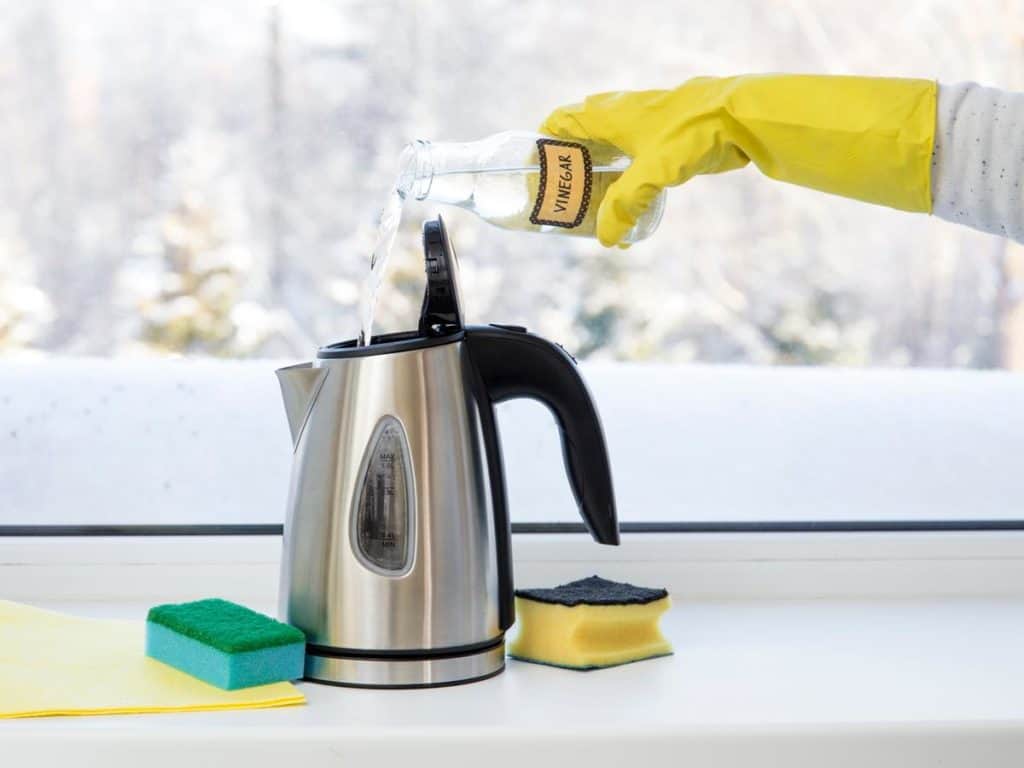
What Happens If You Put Milk in an Electric Kettle?
Unlike water, milk burns when exposed to high temperatures. Boiling milk in an electric kettle can cause it to burn and stick to the base of the pot or any exposed heating element. This can make it difficult to clean the electric kettle properly. In some instances, it may also damage the appliance.
Warm milk is the go-to beverage of people who find it hard to get a good night’s sleep.
Tryptophan — it’s an amino acid that makes milk very good at dealing with insomnia. That’s because it is important for the production of the hormones serotonin and melatonin.
Serotonin lowers stress and promotes sleep. On the other hand, melatonin, which also comes in supplement form, regulates the sleep-wake cycle.
There is no doubt that milk can help you take a trip to dreamland without trouble. However, what’s doubtful is using an electric kettle to get your hands on a cup of warm milk at bedtime.
As mentioned before, milk burns — it’s nothing like water that simply evaporates when it reaches its boiling point (212°F or 100°C).
Well, milk is about 87% water, which will escape in the form of steam. However, the same cannot be said for the rest of the components of milk — they will stay in the pot until they end up burned.
Early on in the article, we mentioned that thick and viscous liquids should not be boiled in an electric kettle.
Milk, which is a colloid because there are tiny globs of fat suspended in it, is one of those liquids that you should not attempt to put in an electric kettle. This is true even if it seems like many online are saying that it’s perfectly safe or the manufacturer of your electric kettle does not specifically say use it for boiling water only.
The problem with milk is that its non-water components will not evaporate when exposed to high temperatures. And with continued exposure to high heat, they will burn. Eventually, when all the water in milk has evaporated, they will stick to the base of the pot or the exposed heating elements, depending on the model.
What’s wrong with this is that it can make it challenging to clean the pot. What’s more, it can interfere with the proper functioning of the electric kettle. In some instances, burnt milk components can also damage the appliance.
And just in case you use your electric kettle to boil a lot of milk, chances are that it will boil over.
This can be dangerous, especially if you are not around to take the necessary action right away, such as unplugging the electric kettle or removing the pot from the base, if removable.
What Liquids Can You Put in an Electric Kettle?
Liquids that are a lot like water in that they are thin and watery are most likely safe to be boiled in an electric kettle.
Because they have pretty much the same boiling point as water, the chances of them causing trouble are slim to none. If the liquid is thick, avoid putting it in an electric kettle.
An electric kettle is originally intended for boiling water quickly and conveniently.
However, thanks to advancements in their design and, more importantly, safety features, there are a few other liquids that are also likely to be safe to be put in electric kettles. Some of those you can put in the appliance include:
- Water. There is no denying that water is 100% safe to boil in an electric kettle. Just make sure that you don’t fill your electric kettle with water above the indicated maximum line to keep it from boiling over.
- Broth. Unlike soup, broth is clear and runny. It’s for this reason why it’s unlikely that boiling broth in your electric kettle will leave the appliance damaged or you injured.
- Black coffee. Provided that your coffee does not contain any ingredient that can make it viscous, such as cream or butter (yes, some people add butter to coffee!), boiling it in your electric kettle should not be an issue.
- True teas. Teas made by steeping the leaves of the camellia sinensis plant are referred to as true teas. Some popular examples include black tea, white tea, green tea and oolong tea.
- Herbal teas. As the name suggests, herbal teas are teas made from the leaves and other parts of herbal plants. Unlike true teas, they are caffeine-free. Many are known to offer some health perks, too.
- Fruit teas. Simply put, fruit teas are beverages made by infusing cut pieces of fruits and the plants they’re from. Some people love fruit teas hot, while others prefer to enjoy them ice-cold.
- Diluted juices. It’s safe to boil diluted juices in an electric kettle if you like to enjoy them as teas. However, be wary as those with artificial colorings may leave the pot discolored.
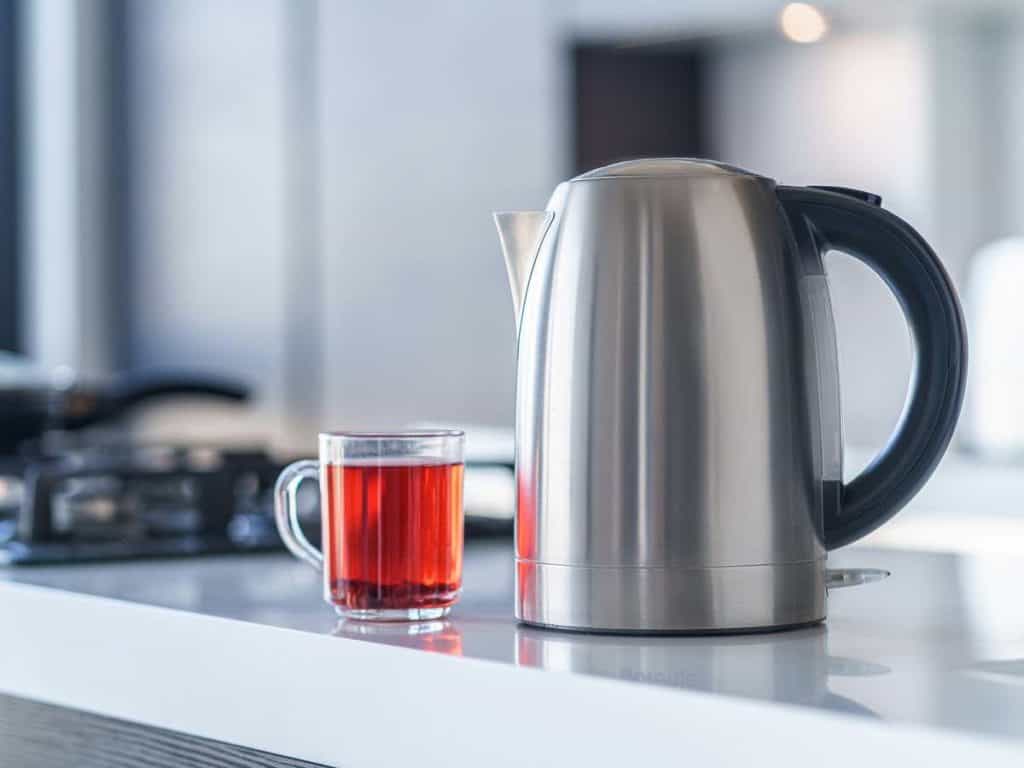
What Liquids Can’t You Put in an Electric Kettle?
Colloids and other liquids that are thick and viscous should not be boiled in an electric kettle. They can burn and stick to the base of the pot or heating element, making it hard for the appliance to clean or do its job. It’s also possible for them to boil over, which can cause injuries and even fires.
Just because many are doing it and able to get away with it unscathed doesn’t mean that it’s perfectly fine for you to also try boiling all sorts of liquids in your trusted electric kettle.
As always, it’s better to err on the side of caution.
Without any more ado, let’s take a look at some of the liquids that you should not attempt to boil in an electric kettle in order to keep your handy appliance and your home, too, intact:
- Oil. There is only one reason why someone would put oil in an electric kettle: to fry something. Oil has a higher boiling point than water, and frying in an electric kettle can cause overheating.
- Spreadable cheese. You can put melted cheese on a lot of things, from nachos to bagels. However, it’s a terrible idea to heat spreadable cheese in an electric kettle as it will burn and stick everywhere.
- Baby food. There are a couple of things that make baby food and an electric kettle a bad mix: the baby food can end up tasting burnt and wind up too hot as to scald a baby.
- Custard. Because it’s one of the stickiest and thickest culinary preparations out there, heating custard in an electric kettle is a complete no-no as it can make cleanup a herculean task.
- Gravy. It can be quite easy for gravy to have a burnt look, smell and taste if you cook or heat it using the wrong kitchen appliance such as an electric kettle.
- Jam. Boiling jam can make it thicker. However, refrain from boiling it using an electric kettle to avoid the risk of burning it as well as potentially damaging your appliance and injuring yourself.
- Salad dressing. Some people like their salad dressings warm than cold because they tend to be more delicious. However, using an electric kettle to heat salad dressings can be impractical and risky, too.
- Juice concentrate. Earlier, we mentioned that it’s probably fine to put diluted juices in an electric kettle. The same cannot be said for juice concentrates as they are sticky and thus can make a mess in the pot.
- Tomato sauce. Some people online say they cook pasta in the electric kettle, which is not recommended. It goes without saying that heating tomato sauce in it for the pasta is not recommended, too.
- Condensed milk. Earlier, we talked about the fact that milk should not be put in an electric kettle. Since condensed milk is so much thicker, it should be off-limits to your electric kettle at all costs.
- Soup. Unlike broth, soup is thick. It’s because of this why you may not only damage your electric kettle when you boil soup in it but also end up with something that tastes burnt.
- Stew. It’s true that you can save a lot of time boiling water in an electric kettle. But stew? Trust me — you will save a lot more time heating a bowl of delicious stew in the microwave than in your electric kettle.
- Hot cocoa. Want to enjoy a cup of piping hot cocoa? Go ahead and boil water in your electric kettle. However, add the cocoa powder to the water only after pouring it into your favorite mug.
Just Before You Use Your Electric Kettle
The average price tag of an electric kettle, at least as of this writing, is anywhere from as low as $15 to as high as over $150.
Whether the one you own is cheap or expensive, it’s a must that you use your electric kettle the right way — it’s not just about keeping it around for a long time but also keeping you and your home safe.
Above, we gave examples of liquids that you can boil in an electric kettle as well as those you should not put in it.
If the liquid is watery like water, it’s probably safe to boil it in your electric kettle. Otherwise, don’t risk it — the microwave, hot plate or stove is more suitable for boiling those.
